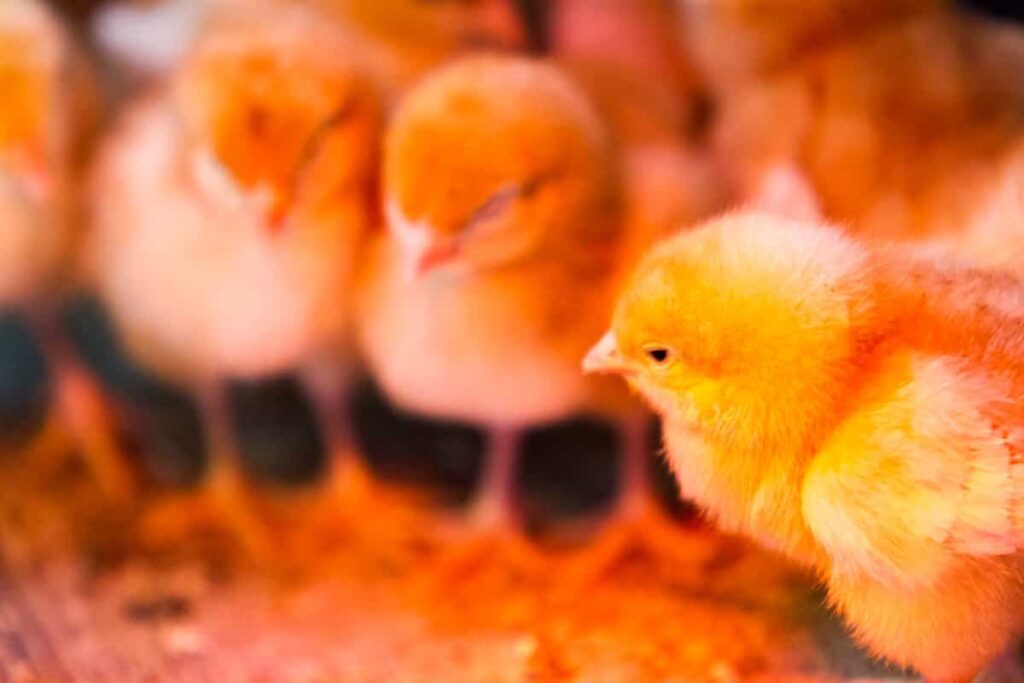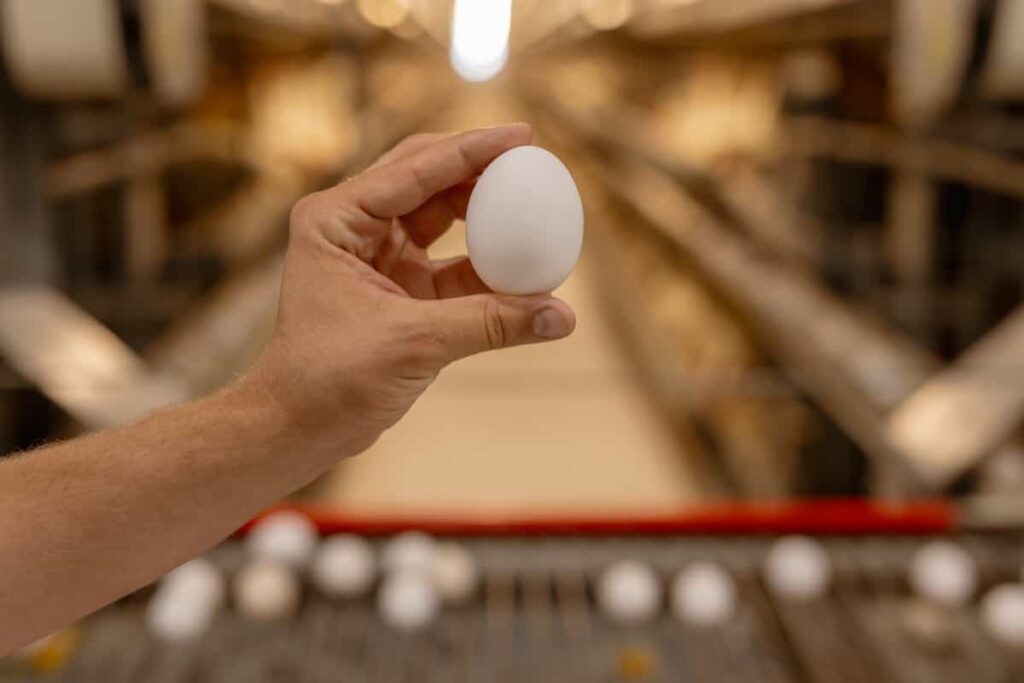Eggs can fail to hatch for several reasons, like infertility, environmental conditions like weather or chemical use, or physical damage to the eggshell. Eggs failing to hatch can be a disappointing outcome for any aspiring breeder or farmer. It’s crucial to understand the complexities of egg incubation and how various external elements can impact the hatching process.

Overview of Egg Incubation
Common Incubation Issues
There are various reasons behind incubation issues. Infertility can be a major factor, where the egg was never fertilized in the first place. Environmental conditions play a crucial role too; factors like extreme weather or exposure to harmful chemicals can impact the development of the embryo inside the egg. Physical damage to the eggshell during handling or storage can also hinder successful hatching.
The Importance of Monitoring Incubation Conditions
Monitoring incubation conditions is crucial for ensuring a healthy environment for embryo growth. Regularly checking and adjusting temperature, humidity, and ventilation settings can make all the difference in fostering optimal conditions for hatching. It is important to maintain proper incubation conditions to ensure successful hatching.
Understanding Incubator Settings
Optimal Temperature and Humidity Levels
The success of egg incubation hinges on maintaining optimal temperature and humidity levels within the incubator. Temperature control is key – too high or too low can result in failed hatching. Most bird eggs require a consistent temperature ranging from 37 to 38°C throughout the incubation period. Humidity levels are equally important, as they impact moisture loss from the egg during incubation. Levels typically range between 45% to 55%, with slight variations depending on the species being incubated.
Adjusting Ventilation for Healthy Embryo Development
Adjusting ventilation in the incubator allows for adequate airflow, ensuring that fresh oxygen reaches the embryos and carbon dioxide is removed. Monitoring these settings closely can make a significant difference in hatching success rates. Without proper ventilation, the eggs may suffocate or develop mold, which can lead to failure to hatch.
Egg Handling and Storage Before Incubation
Proper Storage Conditions to Preserve Fertility
Before starting the egg incubation process, it’s crucial to ensure proper storage of the eggs. To preserve fertility, always collect eggs promptly after laying and store them in a clean and dry environment. It’s recommended to store fertile eggs at around 13-15°C before placing them in the incubator for optimal development. Avoid storing them in temperatures or directly under sunlight.
In case you missed it: Guide to Black Star Chicken: Characteristics, Egg Production, Raising, Diet, Care, Price, and Lifespan

Pre-Incubation Handling Techniques
When it comes to pre-incubation handling techniques, cleanliness is key. Make sure your eggs are free from contaminants and stored with care to avoid any damage that could affect their viability. By following these expert tips, you can diagnose egg incubation failures effectively and improve egg hatching success rate.
Candling Eggs for Viability Assessment
How to Candle Eggs and What to Look For
Candling eggs is a fascinating process that allows you to peek inside the shell and assess the development of the embryo. To candle an egg, hold it up to a bright light source, like a flashlight or a specialized candler. This helps you see through the shell and observe what’s happening inside. When candling, look for signs of life, such as veins or movement within the egg. It’s essential to do this around day 7-10 of incubation when these developments are most noticeable.
Interpreting Candling Results
Interpreting candling results requires attention to detail and patience. Be on the lookout for any abnormalities like blood rings or detached air cells, which could indicate issues with embryo development or contamination. Regularly candling your eggs throughout incubation can give you valuable insights into their progress and help you make informed decisions about their viability.
Troubleshooting Temperature Fluctuations
Identifying Causes of Temperature Instability
When it comes to egg incubation, maintaining a consistent temperature is crucial for successful hatching. Temperature fluctuations can hurt embryo development, so identifying the causes of instability is key. Common reasons for temperature fluctuations include faulty equipment, power outages, or even changes in room temperature. To troubleshoot these issues, regularly check your incubator’s thermometer and consider investing in a backup power source to prevent disruptions.
Strategies for Maintaining Consistent Temperatures
Strategies for maintaining consistent temperatures include placing the incubator in a draft-free area away from direct sunlight or vents. It’s also essential to monitor the environment around the incubator and make adjustments as needed to ensure a stable temperature throughout the entire process.
Managing Humidity Levels
Effects of Low or High Humidity on Egg Development
Maintaining proper humidity levels is crucial for successful egg incubation. Low humidity can result in dehydration of the embryo, leading to developmental issues. On the other hand, high humidity can cause excess moisture buildup, increasing the risk of bacterial growth and suffocation of the developing chicken.
Tools and Techniques for Humidity Control
To control humidity levels effectively, consider using a hygrometer to monitor and adjust moisture content accordingly. Adding water trays or sponges inside the incubator can help increase humidity if needed. Conversely, increasing ventilation or using a dehumidifier can lower humidity levels if they are too high.
Ventilation and Gas Exchange
The Oxygen and Carbon Dioxide Role in Incubation
Ventilation and gas exchange play a crucial role in egg incubation. Oxygen is vital for embryo development, while carbon dioxide must be properly expelled to maintain a healthy environment inside the incubator. Remember, maintaining adequate oxygen supply and eliminating excess carbon dioxide are key factors in creating an ideal setting for eggs to hatch successfully.
Improving Air Flow in the Incubator
Ensuring proper airflow within the incubator helps regulate oxygen levels and stop the accumulation of harmful gases like carbon dioxide. This can be done by adjusting ventilation settings based on the needs of the developing embryos. Improving air circulation also helps distribute heat evenly throughout the incubator, promoting more uniform temperature conditions for optimal growth.
Egg Turning and Positioning
The Importance of Regular Egg-Turning
Regularly turning eggs during the incubation process is crucial for optimal development. By gently rotating the eggs multiple times a day, you ensure that the embryo inside does not stick to one side of the shell, promoting even growth and preventing deformities.
In case you missed it: How to Raise Gold Star Chicken: Characteristics, Egg Production, Size, Lifespan, Price, and Facts

Correct Positioning of Eggs for Optimal Development
Proper positioning of eggs also plays a significant role in successful hatching. Placing the eggs with the pointed end slightly down helps prevent the yolk from settling in an improper position, aiding in proper nutrient absorption for the developing chicken. Consistency is key – maintaining a routine schedule for egg turning will help increase your chances of a successful hatch.
Identifying and Preventing Contamination
Sources of Egg Contamination
Contamination can be a sneaky culprit when it comes to egg incubation failures. Sources of contamination can range from dirty hands touching the eggs to bacteria-laden surfaces in the incubator. To prevent contamination, it’s crucial to maintain strict cleanliness protocols throughout the entire process.
Best Practices for Incubator Cleanliness
Regularly disinfecting your incubator and equipment with safe cleaning agents is key. Additionally, keeping a tidy workspace will help minimize the risk of contamination. Avoid overcrowding the incubator with too many eggs, as this can affect potential bacterial growth. By prioritizing cleanliness in your egg incubation practices, you are taking proactive tips toward ensuring a healthy environment for embryo development and increasing your chances of successful hatching.
Analyzing Unhatched Eggs
Performing an Eggtopsy to Diagnose Failure
Analyzing unhatched eggs is a crucial step in understanding why eggs fail to hatch. Performing an eggtopsy involves carefully examining the contents of the egg to identify any abnormalities or issues. Bacterial contamination found during an egg autopsy underscores the importance of maintaining cleanliness in the incubation environment.
Common Findings and What They Indicate
Common findings during an egg autopsy may include underdeveloped embryos, malformed embryos, or signs of bacterial contamination. These findings can provide valuable insights into factors that may have contributed to the failure of the egg to hatch. For example, underdeveloped embryos could indicate improper temperature control during incubation.
In case you missed it: How to Candle Eggs: What is Egg Candling, Procedure Before Hatching, Pros and Cons for Incubation

Malformed embryos might point towards genetic defects or nutritional deficiencies in the parent birds. By analyzing these common findings and understanding what they indicate, poultry enthusiasts can improve their incubation practices and increase hatching success rates.
Conclusion
Egg incubation failure can be a frustrating experience for any poultry enthusiast. Monitoring and maintaining optimal conditions in your incubator are key to ensuring successful hatching. By taking a proactive method to address potential challenges during egg incubation, you can increase your chances of experiencing a higher hatch rate.
- Management Pests and Diseases in Your Cotton Field
- Sheep Farming Business Plan for Beginners
- Aquaponic Farming at Home: A Step-By-Step Guide
- Profitable Village Farming Business Ideas in 2024
- High-Yield Aquaculture: Fast-Growing Fish for Farming
- Effective Fish Pond Construction Techniques for Beginners
- Irrigation and Water Management in Pineapple Farming
- Blossom to Harvest: Mastering Flowering and Pollination in Papaya Farming
- Pig Fattening Essentials: From Selection to Sale for Beginners
